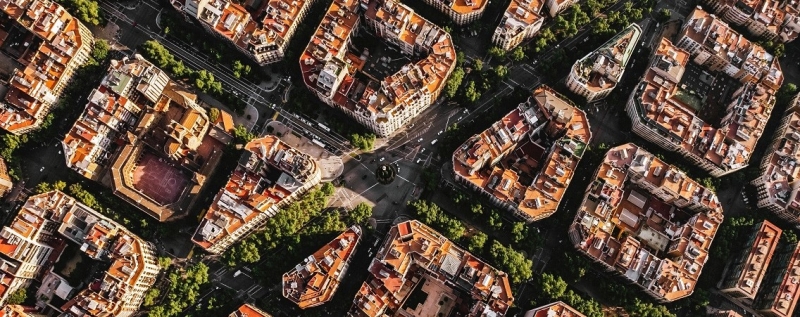
This picturesque city in northeastern Spain will not leave anyone indifferent. The capital of Catalonia is rich in history, majestic architecture, large-scale attractions, green streets, wide beaches, an Olympic stadium, sports museums and nightlife.
Barcelona is a reflection of the culture of Spain. Various exhibitions, festivals, concerts and performances are constantly held here. Art here can be found not only in museums, but also in the open air: each district of the city is unique, and the style of buildings from Gothic structures to modern Gaudi wonders will not leave anyone indifferent.
It’s also comfortable here at any time of the year – the southern climate will not let you freeze in winter, and the green crowns of trees will hide from the hot sun in summer.
Entry rules
Russians will need a passport with a Schengen visa. Now Spain is considered one of the most loyal European countries in terms of document requirements. The application fee is 80 euros for an adult (about 5,800 rubles*).
How to get there
From Moscow to Barcelona you can fly with transfers in Abu Dhabi (Etihad Airways), Casablanca (Royal Air Maroc), Baku (Azerbaijan Airlines), Cairo (EgyptAir) or Belgrade (AirSerbia). The fastest option is Turkish Airlines with a transfer in Istanbul – such a flight will take 9 hours 45 minutes. A one-way ticket costs about 34,000 rubles*.
Where to stay
Hotel Brick Barcelona (rating 9.0) – hotel near the Spanish Village. A night in a standard room with a king-size bed costs from 11,800 rubles*.
U232 Hotel (rating 9.0) – a cozy hotel with a terrace and sun loungers on the roof. Prices per night in a standard room start from 14,800 rubles*.
Boutique Hostemplo Sagrada Familia (rating 8.9) – boutique hotel 200 m from the Sagrada Familia Cathedral. A night in a room with a jacuzzi, a private balcony or terrace costs from 14,900 rubles*.
The One Barcelona GL(rating 9.4) – a five-star hotel in the city center with a rooftop pool. Prices per night in a room with panoramic windows start from 27,000 rubles*.
How to move
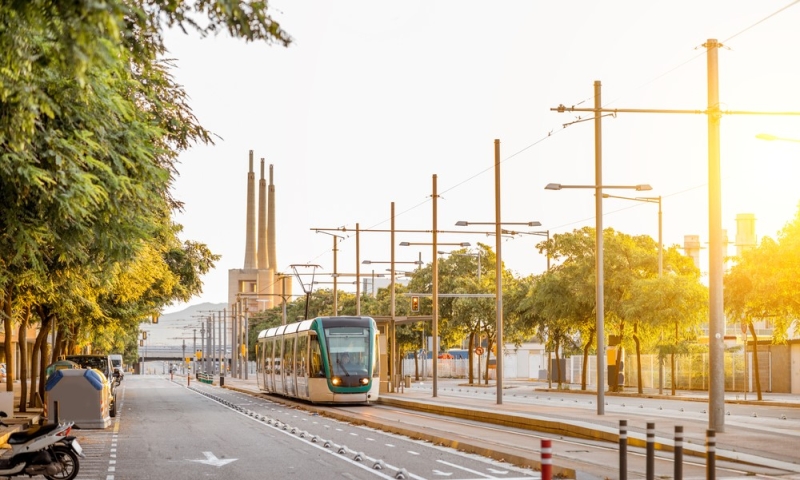
The city has excellent public transport. A single ticket costs 10.2 euros (about 860 rubles*) and within 1 hour 15 minutes allows you to make a free transfer to the metro, funicular, tram or city bus.
Also selling unlimited transport cards “Hola BCN!” for 2, 3, 4 and 5 days. Some offer free admission to major attractions or discounted entry fees. The cost of the card starts from 15 euros (about 1,200 rubles*).
Tourist bus
Choose this option if you want to quickly explore the main attractions of Barcelona. There are three routes:
- Red – passes by Plaça Catalunya, Rambla, Gaudí’s buildings, the Spanish Village and the funicular station to Montjuïc.
- Blue – lies past the Sagrada Família cathedral and the funicular station to Mount Tibidabo.
- Green – passes by the Olympic port and the beach. Open from mid-March to November.
What to see
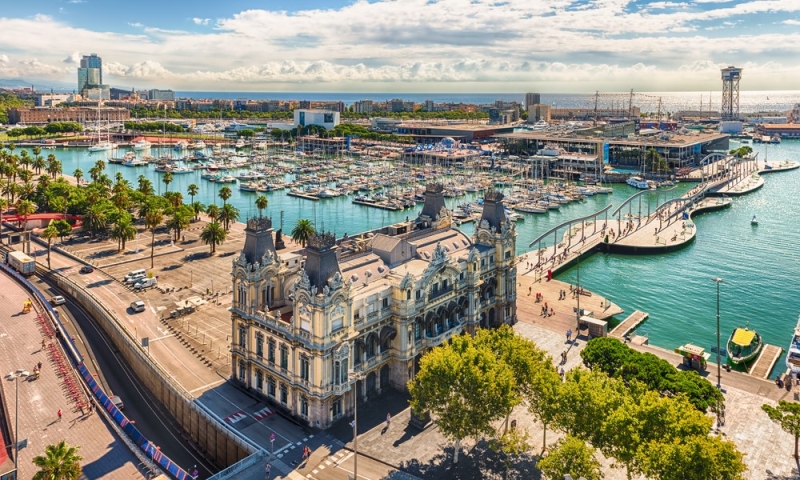
Day 1. Las Ramblas
La Rambla
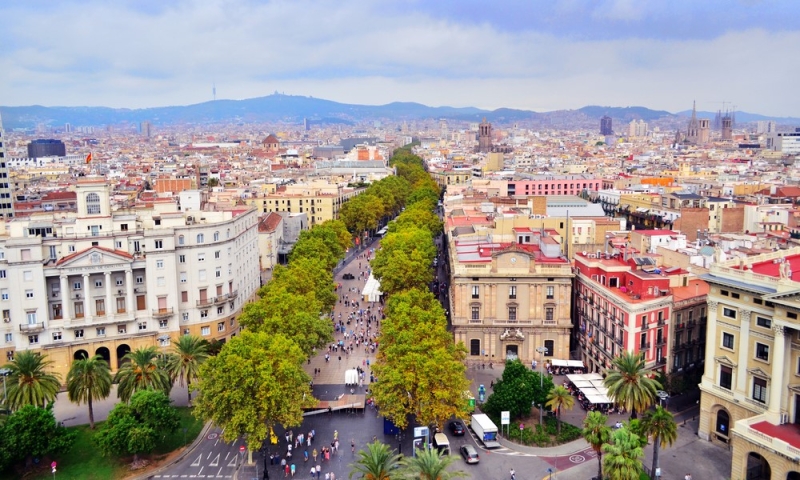
The main and most famous street in Barcelona connects Plaça de Cataluña and the embankment. The street is often referred to in the plural as Las Ramblas, because in fact it is a whole sequence of streets with the word “Rambla” in the name. It separates the two central districts of the old city of Barcelona – the tourist Gothic Quarter on one side and the ancient El Raval on the other.
La Rambla is home to the La Boqueria market with fresh seafood and some of the best local cuisine, the Gran Teatre del Liceu and modern art museums. During your walk you will see many street artists, entertainers and souvenir vendors. But be careful: in Spain there is a lunch break – a siesta. Almost all shops and restaurants close between 14:00 and 17:00, and most of them are closed on Sundays.
Gothic Quarter
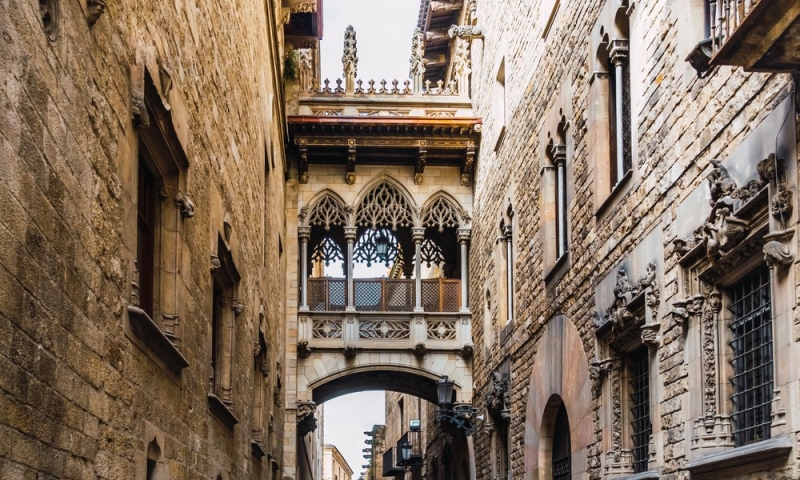
Locals say that the soul of Catalonia lives in these winding streets and small squares with fountains. Even on the hottest day, the gray walls of the medieval buildings create shade, which is why it is so pleasant to get lost here for a few hours. The Gothic Quarter is home to Barcelona’s Pla de la Seu cathedral, the Catedral de Santa Eulalia with its famous balcony, the Picasso Museum, hidden bars, authentic boutiques and restaurants.
Plaça d’Isidre Nonell
Not far from the Cathedral there is a mural “The Kiss of Freedom”. This is a mural that from a distance looks like lips kissing, but up close you can see thousands of tiny ceramic tiles. For this mural, the artist collected more than four thousand photographs of Spaniards in which they are happy, so each individual tile represents freedom and joy.
If you get hungry, nearby is La Tasqueta De Blai restaurant with a huge selection of tapas. Even if you think that Spanish cuisine will not surprise you, still give it a chance.
Palau de la Música
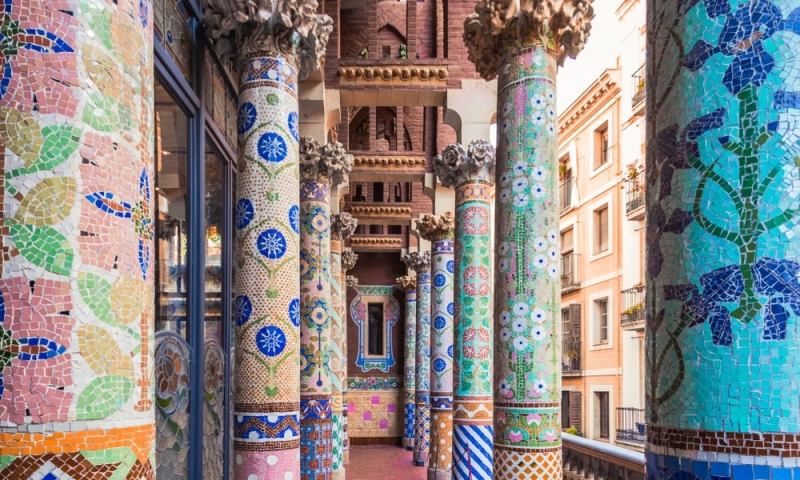
Catalonia is famous for the work not only of Gaudi, but also of the architect Lluis Domènech i Montanera. The palace of music he created has one of the most luxurious interiors in Spain. Opera is usually staged here, but you can find a show to suit every musical taste. The inside of the palace surprises more than the outside: a riot of colors, bright tiles, carved columns, sculptures, ceramic tiles, a stained glass dome of the ceiling, curved fancy staircases, balconies and an abundance of mosaics will not leave anyone indifferent.
Spanish Village
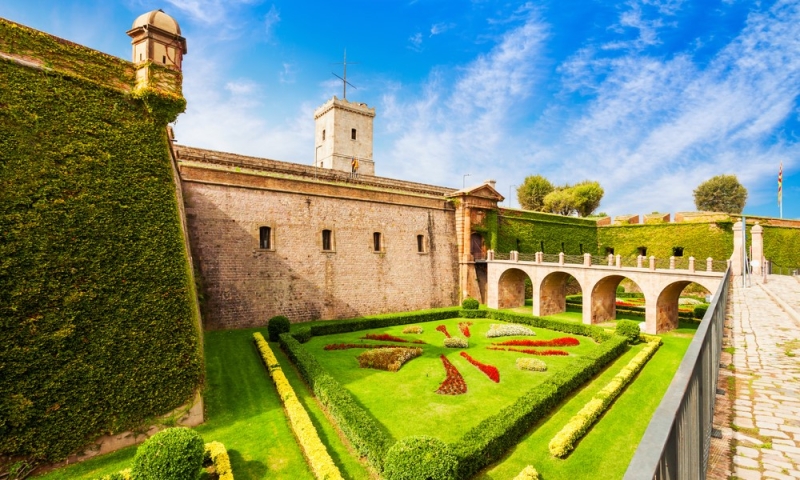
People usually come to this area to see the 17th-century Montjuïc Castle, take the funicular up the mountain, or see the Magic Fountain light show from the steps of the National Museum of Art. However, there is another attraction here that few have heard of: the local Botanical Garden Jardin de Mossen Costa is hidden on the hillside. The spacious, verdant gardens feel like a tranquil, deserted outdoor oasis, and there is also an observation deck with stunning views of the city.
Day 2. Walk “through Gaudi”
Sagrada Familia
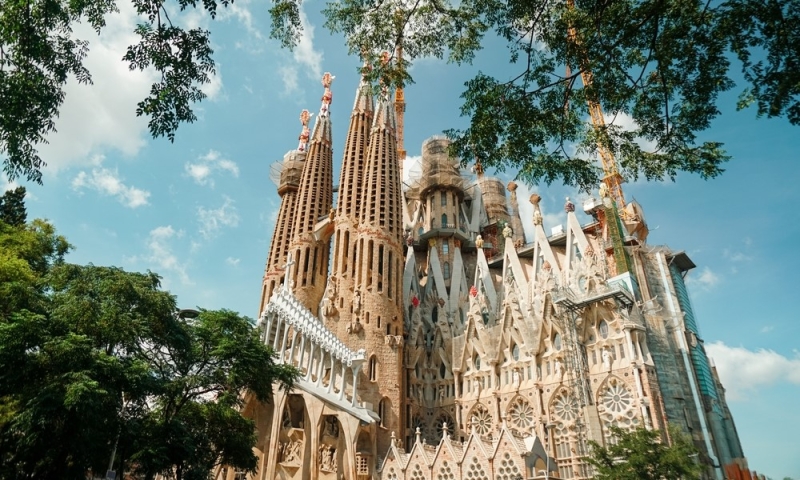
Sagrada Família is Gaudí’s most famous work of art and architecture. Construction of the cathedral began in 1882 and is still ongoing, but you can go inside and climb the tower. Ticket prices start from 26 euros (about 2,200 rubles*), to avoid queues, buy them online.
The entrance to the cathedral is decorated with facades that describe scenes from the Bible, and inside Antoni Gaudi created amazing forms decorated with granite and stained glass mosaics, through which sunlight passes and paints the white walls of the decoration with all the colors of the rainbow. Every element of the building seems thought out to the smallest detail that you want to look at.
Parc Guell
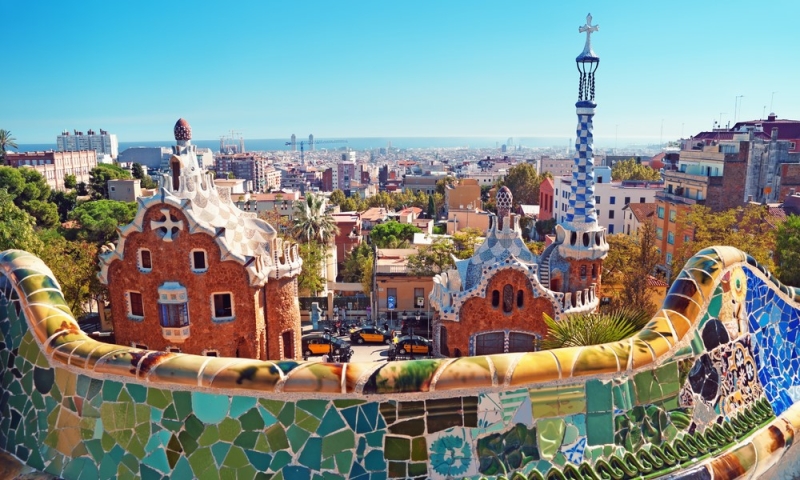
The garden complex is considered the most creative in the world and is a UNESCO World Heritage Site. It’s next to the Sagrada Família, but it’s nothing like a cathedral: the park is full of colour, dynamic shapes, ceramic mosaics, innovative architecture and lush trees. The centerpiece of the park is the main terrace, which is surrounded by a long bench in the shape of a sea serpent. Each of Gaudi’s works had its own theme. The design of the park was inspired by artistic elements of Catalan nationalism, as well as ancient poetry and mysticism.
Palau Güell
It was the private home of the philanthropist and wealthy industrialist Eusebi Güell. The centerpiece of the house is the central room, which was used for entertaining, religious ceremonies and parties. This room is crowned with a parabolic dome, which illuminates the entire space through a series of small holes that create a starry sky on the ceiling in the evening.
Gaudi designed the horse stables, carriage house, dining room, musicians’ room, offices and bedrooms down to the smallest detail. For example, if you go up to the roof, you will see 20 chimneys decorated with mosaics.
Casa Batllo
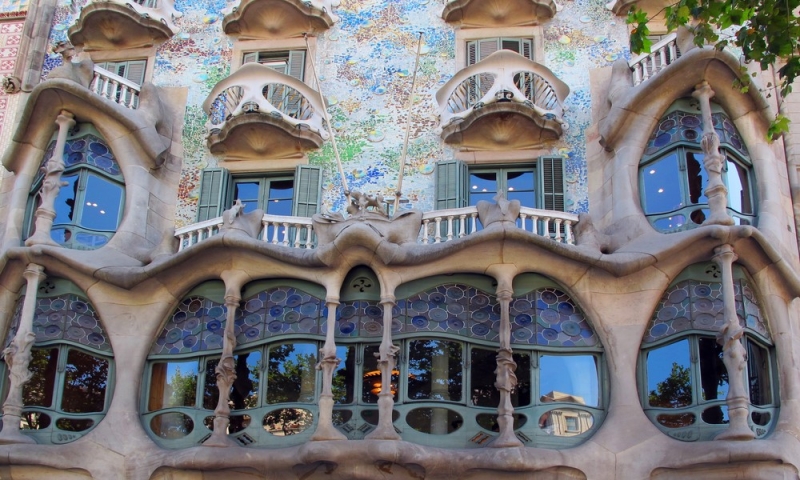
Gaudi did not design this building, but restored it: he completely redid the exterior, main floor, courtyard and roof. The facade of Casa Batllo is decorated with a mosaic of broken ceramic tiles, which the architect collected from waste from a nearby glass workshop. And the roof of the building has an arched shape and resembles the back of a dragon.
Casa Calvet
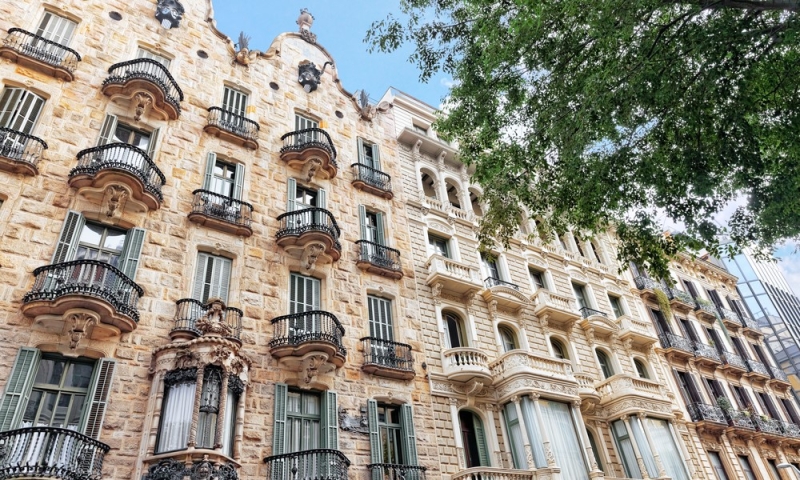
People usually pass by this building and don’t pay attention to it – it’s not like Gaudi’s other works. Partly because the house is located between two others, partly because it is located in an expensive area with a strict style. Nevertheless, the architect included mythological and natural motifs in the building’s theme, for which Casa Calvet received the “Best Building of 1900” award.
Casa Vicens
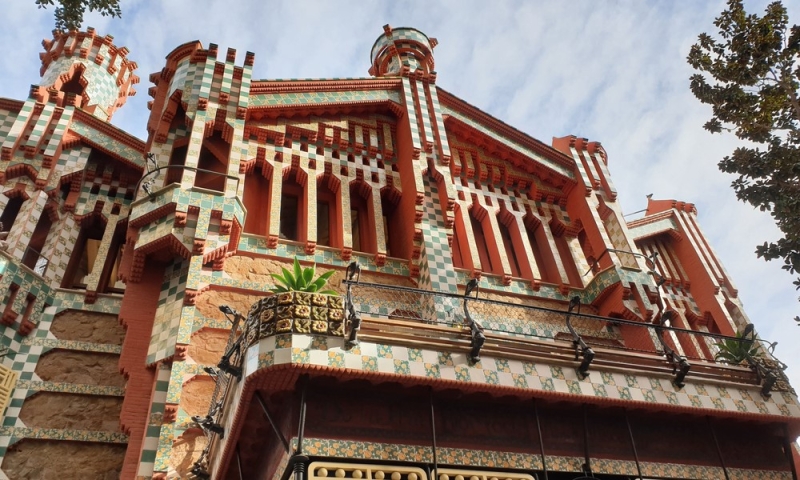
This building was Gaudí’s first great work. It is made of rough stone, rough red brick and colored ceramic tiles with checkerboard and floral patterns – this choice of materials paid tribute to the profession of the customer, who was the owner of a brick and tile factory. The building was first opened for tours at the end of 2017, so until now few people have seen the interiors of this house.
Casa Mila
One of Gaudi’s most popular works was created under the guise of a snow-capped mountain – for this purpose the façade of the building was made of limestone. However, the rough facade reminded people of a stone quarry, and Casa Mila was nicknamed La Pedrera, which means “the quarry.”
The Art Nouveau building features winding wrought-iron balconies, colorful frescoes with floral and mythological motifs, courtyards filled with sunlight, colorful chimneys on the roof and an attic space that consists of 270 brick arches. Gaudi, as always, thought through the interior to the smallest detail: he even designed the door handles, stucco moldings and floor coverings, which can still be seen inside the building to this day.
Fountain in Parc de la Ciutadella
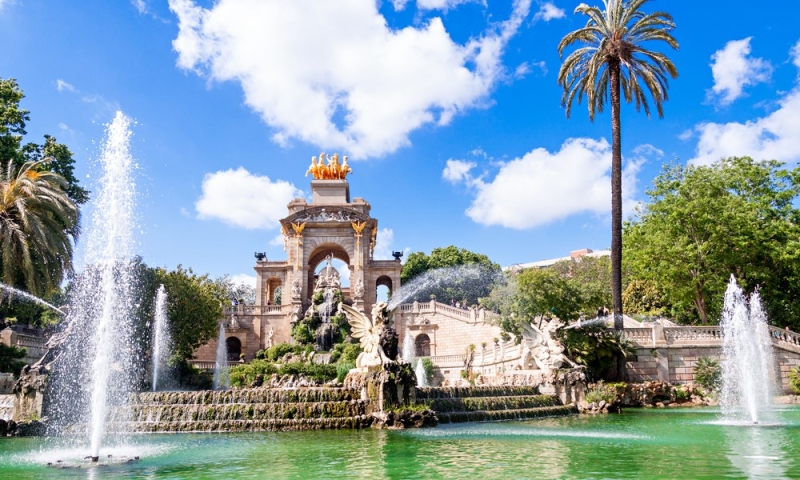
The fountain is made in the Baroque style – massive and intricate, it is somewhat reminiscent of the famous Fountain di Trevi in Rome. Located in a large park near the embankment, on the territory of which there is a lake, the Barcelona Zoo and the ancient Parliament building. It’s especially good here in the evening, after walking through other works of Gaudí: when you see the fountain that the architect worked on as a student, you will be able to appreciate the evolution of his style.
*Prices are current at the time of publication.

